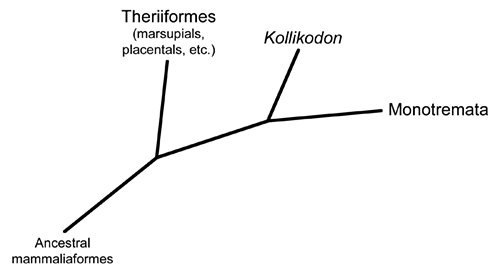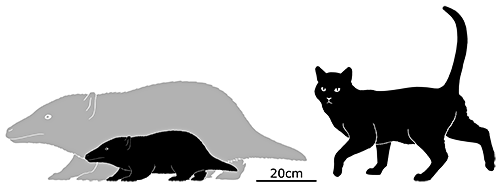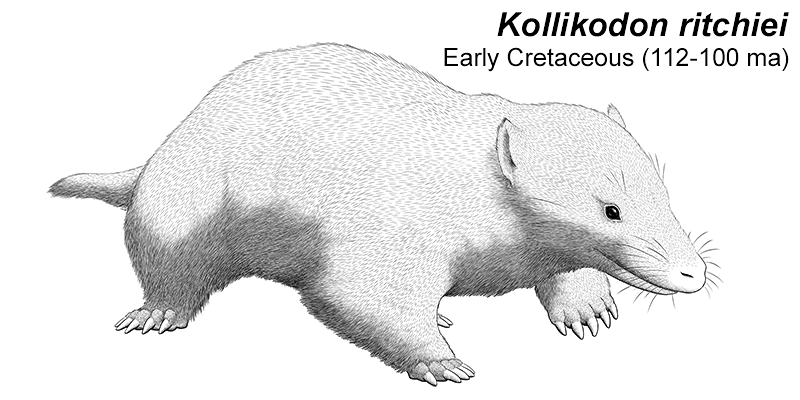Kollikodon
At this point we’re into Mammalia proper, and here the first major split happens between the Yinotheria (the lineage including monotremes and their relatives) and the Theriiformes (the lineage that includes everything else).
Although once widespread, with fossils known from Europe, Asia, Madagascar, and South America as well as Australasia, the remains of yinotherians are unfortunately rare and very fragmentary. Most specimens consist only of teeth and pieces of jaw, so we know very little about their ecological diversity or what they looked like.
The oldest known yinotherian fossils date to around 170 million years ago in the mid-Jurassic, but genetic studies suggest their last common ancestor with the theriiformes could have lived as far back as the Late Triassic 220 million years ago.

Kollikodon is known from a couple of jaw fragments from the Early Cretaceous of New South Wales, Australia (112-100 mya). It was a close cousin to the monotremes, but unlike its living relatives it had well-developed teeth which appear to have been highly adapted for crushing hard food – possibly insects, shellfish, or even tough plant matter.
Its full size is very uncertain, with estimates ranging from 50cm up to 1m in length (1′8″-3′3″). If accurate, the upper estimate would make it one of the largest of all known Mesozoic mammals.
The image above is therefore very very speculative. Most reconstructions seem to depict Kollikodon as little more than a large platypus, despite it lacking evidence of a bill, so I decided to go for something more visually different. Less aquatic-specialist, more pig-like omnivorous generalist eating whatever it can crunch in its jaws.


